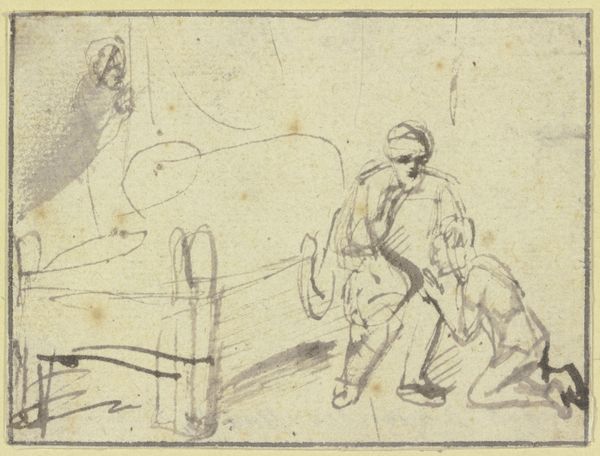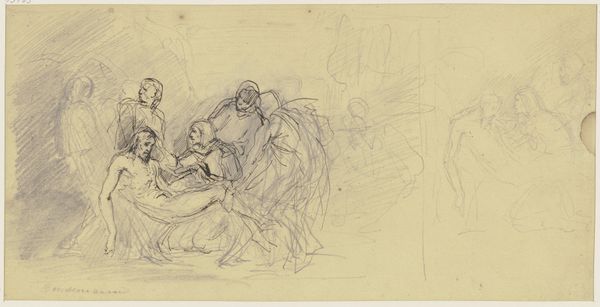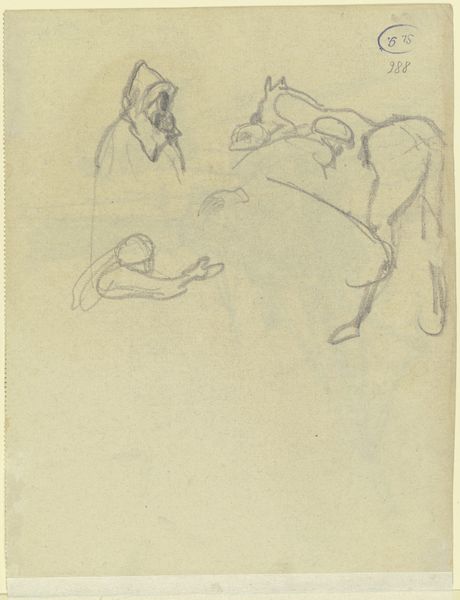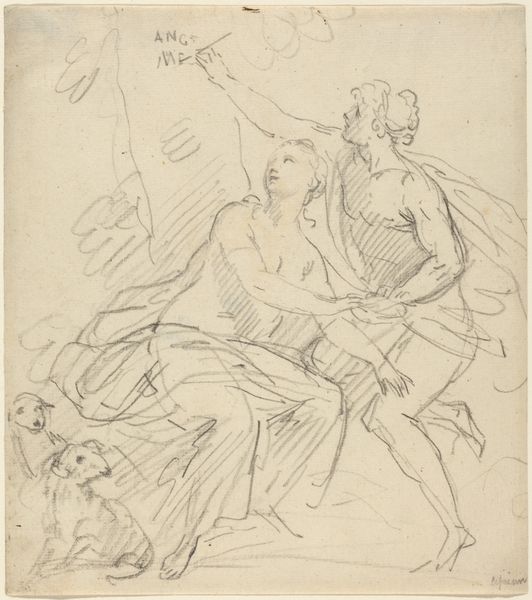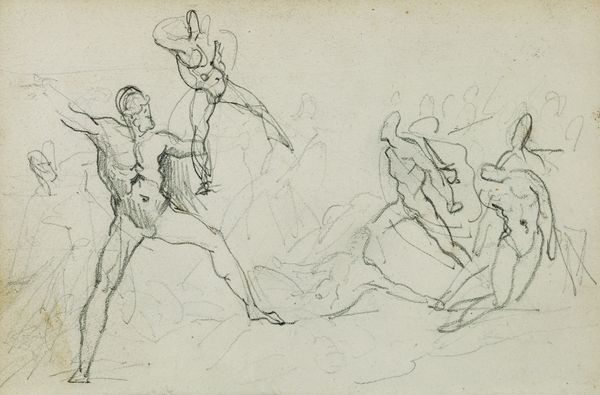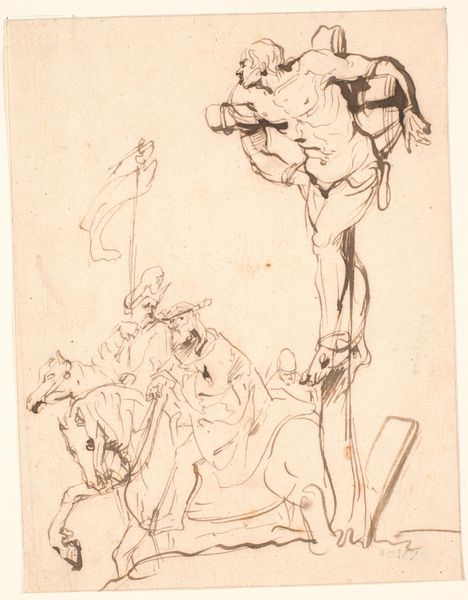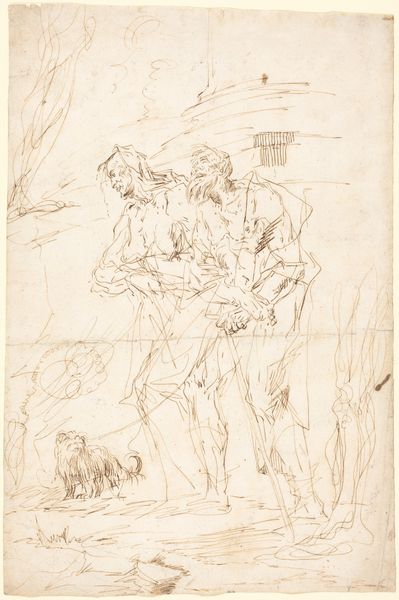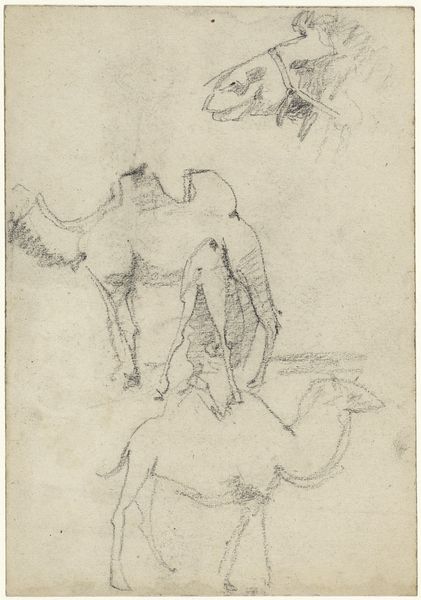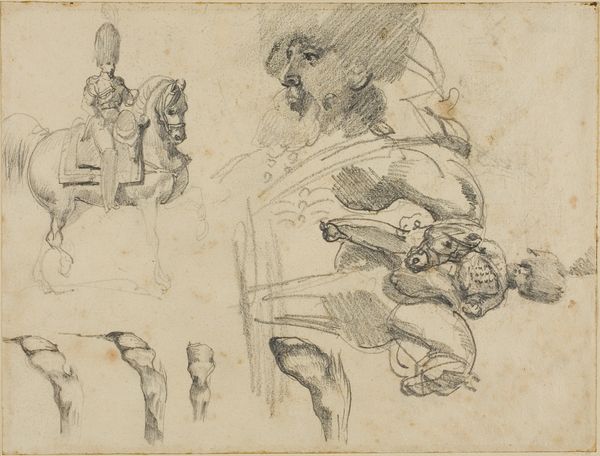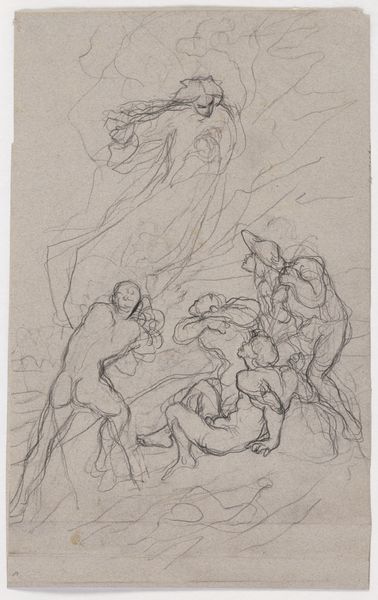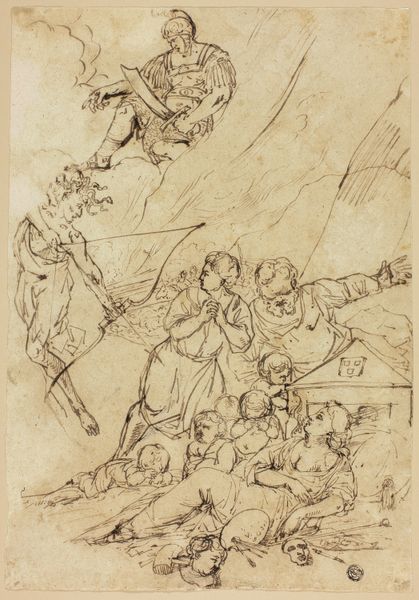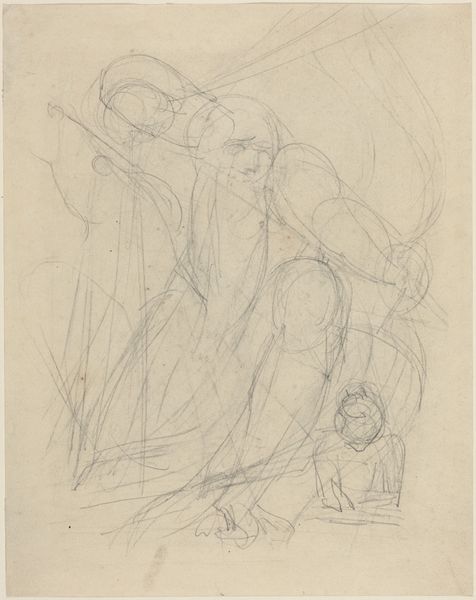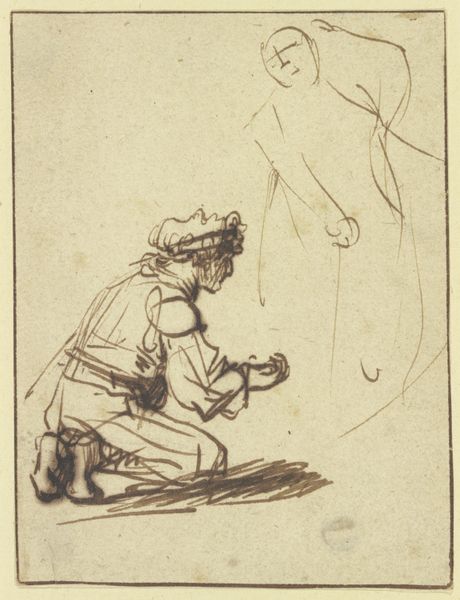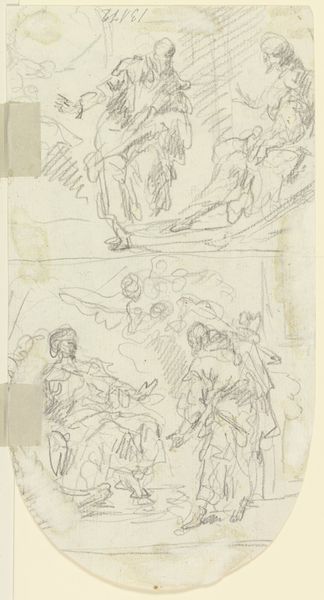
Dimensions: sheet: 8.4 × 5.1 cm (3 5/16 × 2 in.)
Copyright: National Gallery of Art: CC0 1.0
Curator: Let’s turn our attention to this compelling sketch, "Father, Son, and Donkey," created around 1859 by Elihu Vedder. It’s rendered in pencil, offering a raw, intimate glimpse into a familiar scene. What strikes you initially about this piece? Editor: The raw quality really gets me too. The sketchiness, almost like the figures are emerging from the paper itself, and that muted, silvery pencil hue—there’s an intimacy in that kind of artistic process, isn't there? You can feel Vedder grappling with the composition. Curator: Absolutely. The visible erasures and varied line weights reveal the artist's process, fitting for the time, during which Vedder, among other American expatriates, embraced the emerging aesthetic values during their stays abroad. This scene really reflects upon the sentimental nature of familial bonds and genre painting so popularized at the time. Editor: And that focus on domestic narratives says so much about the period's values, doesn't it? It’s about the rise of the bourgeoisie and an inward-turning focus on the home. The humble donkey also grounds the entire subject matter. You could consider the type of graphite that was used or sourced, to maybe indicate how art was accessible at this point in history for the domestic artist. Curator: Exactly, we begin to see the rising influence of family values on American paintings that continues through time. What this represents for the institutions preserving it later on is their cultural significance over time, as Vedder received acclaim in American academic and artistic institutions later in life. Editor: And it raises questions too, like who this piece was even made for. Did the rising art market or new patronage models enable more work from artists like Vedder? This piece could potentially be seen as a social reflection through form. It’s also this quiet reflection of human relations; as it considers fatherhood and manual labor, it almost pushes back on traditional academic artworks. Curator: Definitely a tension there. But think of it more as him finding his place within academic art through the accessibility and common themes it takes on through form. It tells the historical viewer where Vedder stood. Editor: You're right. Seeing it in those terms shows the impact this work may have for current academic and societal standards as well!
Comments
No comments
Be the first to comment and join the conversation on the ultimate creative platform.
